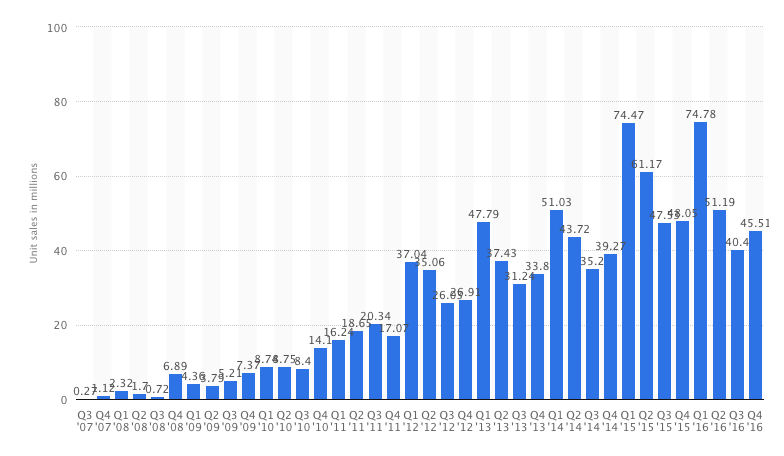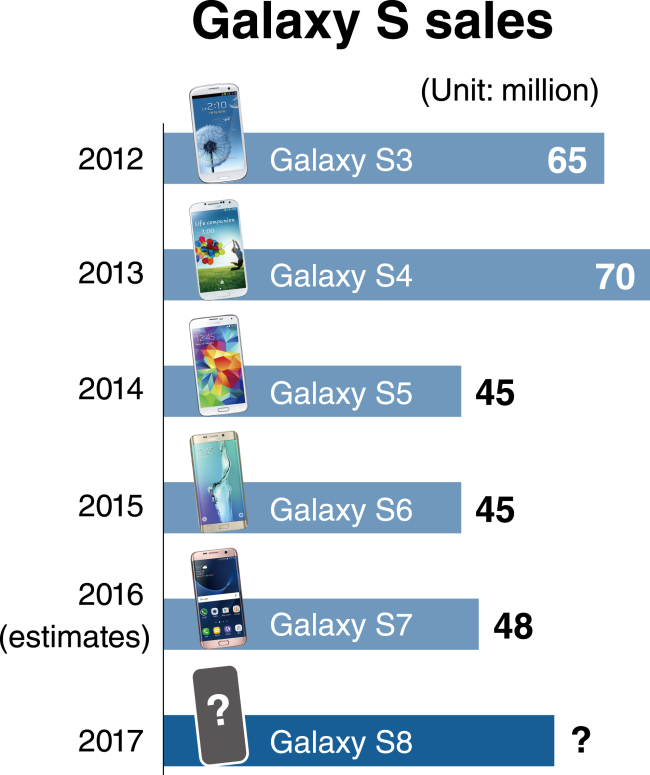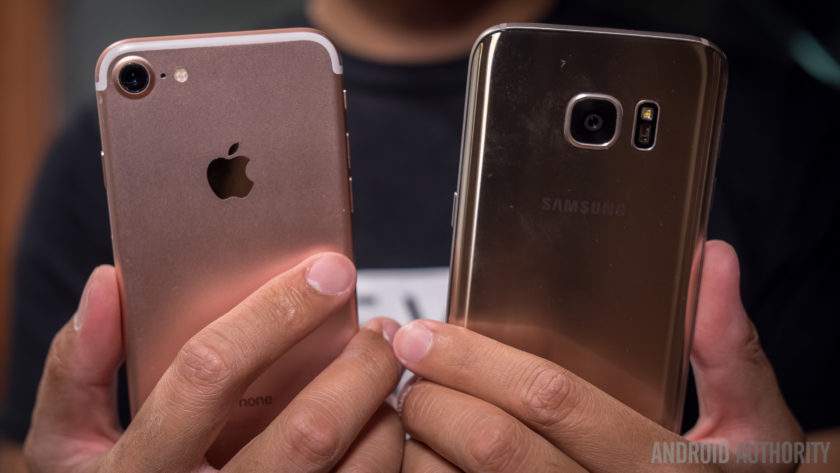Samsung seems optimistic about how well the Galaxy S8 will sell this year. So much so, in fact, that they’ve set a goal of shipping 60 million units for the 12-month period starting around mid-April, when the new smartphones will start shipping out.
Until now, Samsung has only crossed the 60 million sales mark with two S model – the Galaxy S3, which sold 65 million units in 2012, and the Galaxy S4, with 70 million in sales for 2013.
Apple, it’s chief rival in the United States as well as globally, plans to sell 80 million iPhone 8 units in the final three months of 2017.
Looking at the numbers, one might think Samsung is actually far behind Apple, but that’s not necessarily the case. It’s probably true for the premium segment of smartphones, but not where overall sales are concerned.
As an example, Samsung sold 77 million smartphone units in the second quarter of 2016, while Apple only sold 40.4 million iPhones. In terms of market share, 22% went to Samsung while only 11% was Apple’s.
This year, Apple wants to hit 80 million in sales for iPhone 8, while Samsung’s estimates for the flagship Galaxy S8 model are much more modest, at 15 million units for the same quarter.
Both appear to be stretch targets because neither of them have hit those numbers in recent quarters.
Take Apple’s Q4 2016 sales, for instance: including the first month sales of iPhone 7, Apple only sold 45.5 million units. That’s from July 1 through September 31, 2016. Granted, Q1 2017 (October 1 to December 31, 2016) sales may tell a different story when Apple releases that quarter’s earnings on January 31, 2017.
Here’s a look at iPhone quarterly sales for the past several years:

As you can see, Apple had two over-the-top quarters as far as iPhone sales go. The first one was in the final three months of 2014 (Q1-15 on the chart), when they crossed 74 million units. That was the year iPhone 6 and 6 Plus were launched.
The second time they went over that number was the following year, when the iPhone 6S and 6S Plus were launched.
Until the numbers are out for the 2016 holiday quarter, we won’t know if Apple once again crossed that 74 million unit benchmark that it set over the two prior years.
Keeping that in mind, there are now two scenarios that could play out for Apple during this critical 10th anniversary year of iPhone.
On the one hand, the smartphone market is showing signs of maturity and slower growth, and that includes big players like Apple and Samsung. If that continues, the last quarter of 2017 may not see 80 million iPhone sales for Apple, and the year may not yield 60 million Galaxy S8 orders for Samsung.
On the other hand, this being a milestone year for iPhone, we may see new market segments choosing to buy from Apple rather than Samsung, if only for the memorabilia aspect. If that happens en masse, we could see record sales from iPhone for the final quarter of 2017.
But there’s a huge hurdle that may prevent this. Smartphone penetration in developed markets like North America and Europe is already very high – at near-70% levels, in fact. So, what does that imply for smartphone makers? It means growth for the future will depend on two things – how fast companies refresh their smartphone models, and how often consumers are willing to upgrade their phones.
Unfortunately, the news isn’t great on that front, either. Device makers typically follow an annual cycle for model refreshes, but consumers follow a much longer cycle that is nearing 30 months, or more than two years.
That said, the iPhone is obviously in the premium segment of that market, so these patterns are even more pronounced. As such, we can only expect a small percentage of people to upgrade their phones every year. The typical cycle is about two years or so.
Considering all these factors, it’s going to be extremely hard for Apple to keep beating its own numbers on device sales – even with the iconic iPhone.
The same goes for Samsung as well. With their flagship phones not hitting the 60 million sales mark since 2013, it’s definitely going to be a challenge pushing that many Galaxy S8s into customers’ hands this year. Judging by the fact that the Galaxy S7 is estimated to have sold about 48 million units, a sales figure expectation of 60 million for the Galaxy S8 might not be reasonable.

Nevertheless, both these electronics giants are betting big on this year’s flagship smartphones, which is a great sign that they haven’t given up on taking their products to greater heights.
But it begs the question: are they being realistic with their targets?
Thanks for reading our work! Please bookmark 1redDrop.com to keep tabs on the hottest, most happening tech and business news from around the world.



